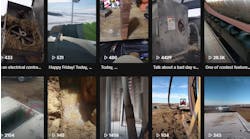You work for an electrical services firm. A plant that does not have its own electricians called your company about a problem with the various dry-type transformers that are part of their load-side power distribution system. The complaint is that these transformers hum loudly and seem to throw off a lot of heat.
Your boss wants you to check it out and see what’s going on. The customer cannot shut down until three weeks from now. What are the most likely causes that you can test for while equipment is energized, and how will you test for them? Are there “likely” contributing issues you can’t test for until shutdown? What tests would be needed? Could some mediating measures be taken right away without shutdown?
Let’s take those last two questions first. Aside from things like improper case grounding of the transformers (full verification requires opening the case), you should be able to test for everything without shutting down. Thus, you can perform needed repairs during the shutdown. The three-week delay gives you time to plan the job and order what’s needed. There is probably nothing you can do to fix the problems while equipment is energized.
Three likely problems include:
- Low power factor (PF) at major loads. Use a power quality analyzer or calculate PF using the difference between readings of an averaging DMM and a true rms DMM. Solution: PF correction capacitors at the largest motors (if the motors have variable frequency drives, contact the VFD manufacturer).
- Excess triplen harmonics. Use a harmonic analyzer. The solution will depend on where these originate.
- Open neutrals on branch circuits. Use a plug-in circuit tester.




